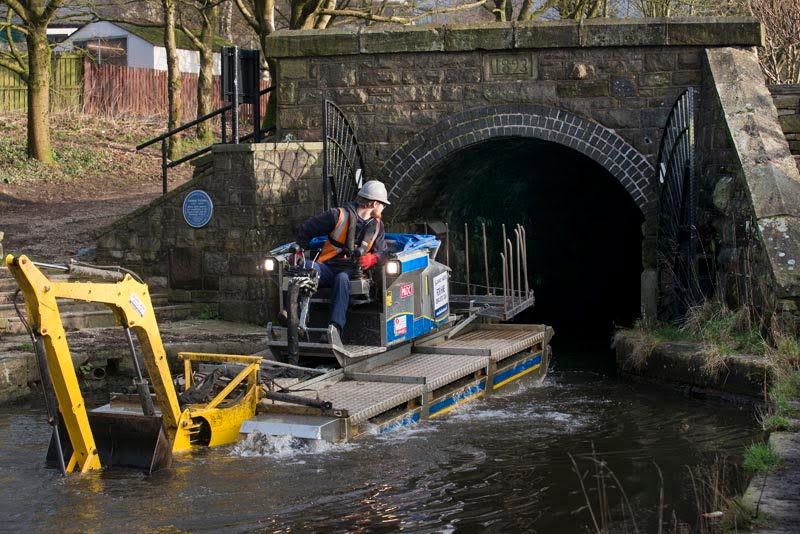A specialist ‘amphibious tractor’ is today (11/2/16) venturing into Standedge Tunnel – Britain’s longest and deepest canal tunnel – to clear a blockage that built up during the recent heavy downpours that caused widespread flooding across the North of England.
The unusual work, which requires the help of a specialist mining consultant, is hoped to take two days to complete. A hydraulic bucket on the front of the amphibious dredger, known as a Truxor, will be used to clear the blockage so that boats will once again be able to navigate the 3¼ miles through the tunnel.
It is thought that during the unprecedented wet weather, approximately 8-9 cubic metres of sand, gravel and other debris were swept into the tunnel by a stream that flows into the tunnel about 250 metres from its entrance at Diggle.
Mark Weatherall, senior project manager at the Canal & River Trust, comments: “Standedge Tunnel is such an amazing engineering achievement. 200 years ago, navies used picks shovels and dynamite to carve their way 3 ¼ miles from one end of the tunnel to the other. Today, it’s popular with boaters and tourists and it’s important that we carry out this specialist work to get the tunnel and navigation open to the public.
“Working deep underground in a tunnel on a floating dredger is quite unusual and poses many new problems which, I am proud to say, the team have successfully overcome in a short period of time. Not only have we had to bring in specialist equipment, we’ve had to take specialist advice from a mining consultant who is experienced in confined spaces to make sure that the work is undertaken in a safe and efficient way.”
Standedge Tunnel is over 200 years old and known as one of the Seven Wonders of the Waterways. The works to clear the blockage will ensure that the popular visitor attraction, which includes passenger trips into the tunnel, will reopen for the summer season as planned on 19th March.

